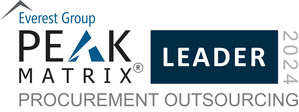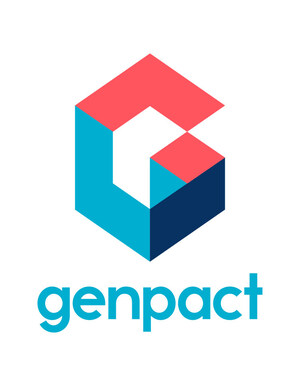Data and analytics key to unlocking meaningful impact on DEI progress but not all organizations take full advantage of opportunities
NEW YORK, Sept. 27, 2022 /PRNewswire/ -- Companies miss a huge opportunity for consequential progress toward increasing diversity, equity, and inclusion (DEI) if they neglect to use data-led analytics that generate deep insights into their organizational cultures, according to a study released today by Genpact (NYSE: G), a global professional services firm focused on delivering digital transformation.
The research, Tech for Progress 360: Taking diversity, equity, and inclusion from ambition to reality, gathers insights from 510 senior executives from large global enterprises across industries. The study finds that the senior executives whose companies have embedded diversity, equity, and inclusion into their business – the inclusion front runners – are better positioned to take advantage of their companies' recent technology investments and changing workplace models.
Over the past couple of years, the pandemic and racial protests have focused organizations' attention on DEI. Nearly all executives surveyed (95%) say that their companies accelerated their digital technology rollout in response to the pandemic. In a similar vein, the pandemic forced companies to embrace remote working, which respondents say had a net-positive impact on progressing their companies' DEI goals. While remote work also increased the responsibilities and the possibility of burnout for women in particular, companies have an opportunity to build on the positive elements as they settle into a hybrid-work environment.
Despite the advantages from technology and new working models, many companies still struggle to make progress on DEI but can learn from those that are further ahead. Genpact's study finds that inclusion front runners use their capabilities with data and insights to get to the bottom of the complex cultural elements that are core to fully embedding DEI across all activities, decisions, and objectives. These organizations are:
- Evolving company culture: Half of inclusion frontrunners use data-led insights to understand their company cultures and find opportunities to evolve them, compared to only 28% of other respondents. Without this cultural insight, DEI initiatives will not deliver profound change within an organization.
- Nurturing networks: Inclusion front runners also understand that the makeup of people's networks is a key indicator of how diverse or inclusive their organization is. These executives are much more interested in assessing the strength of employees' professional networks – the people employees connect with regularly and infrequently – 51% of leaders analyze these insights vs. 35% of other respondents.
The report underscores the power that technology can have to provide transparency and insights on issues critical to DEI. At the same time, the study sounds a striking alarm if companies fail to harness their data and analytics, and identifies how many businesses still struggle on actionable steps to:
- Recruit and retain: When looking at the career life cycle of people from underrepresented communities, only 40% of all executives say their companies use data and insights to improve their ability to recruit and retain these groups – and a mere 25% do so to promote and train them.
- Reduce bias: Technology and data are strong tools to reduce bias in decision making but only 40% of all respondents say their companies use technology this way.
These findings suggest that more businesses would benefit from using data-led insights to embed DEI at all levels of their organizations, and to look beyond the surface layer of diversity-related data, like reporting on the number of employees from underserved communities.
For example, by measuring employee behavior — people's interactions and other forms of communication — and organizational metrics, like promotion and turnover rates, companies can gain a deeper, more realistic picture of their DEI achievements and where they need to act to make a material difference. For example, they can go from simply tracking new hires to gaining insight on who's involved in projects, who's making decisions, and which groups are represented in meetings.
Analyzing relevant data from an enterprise's vast volumes of emails, instant messaging, and meeting invitations, etc. can demonstrate where representation has become a reality at each level of the firm. When organizations can also trace employees' career journeys to compare experiences and how access to the company's leaders and networking opportunities varies, they can make decisions based on a realistic view of the company culture and progress toward building a truly diverse, equitable, and inclusive business.
"Access to the learning, mentorship, networks, and training that help people grow should be distributed equally, but often it's not," said Heather White, chief legal officer and global leader of DEI, Genpact. "Some groups still find it more challenging than others. Combining a change in mindset with analytics and digital solutions can unlock greater equity."
Conducted in partnership with FORTUNE Brand Studio, the report is the final in a three-part series, Tech for Progress 360, analyzing how companies are using technology to drive impact beyond the bottom line. The research examines how businesses are working toward three distinct objectives: enhancing the employee experience; delivering environmental sustainability; and achieving diversity, equity, and inclusion.
For more information, see https://www.genpact.com/tech-for-progress/diversity-equity-and-inclusion.
About the Research
Genpact and FORTUNE Brand Studio conducted an online survey of 510 senior executives across the U.S, U.K, Germany, Australia, Japan, and Canada in the fall of 2021 to study how companies are using technology beyond the bottom line by examining progress toward three distinct objectives: enhancing the employee experience; strengthening communities through diversity, equity, and inclusion; and protecting the environment About 30% of respondents hold C-level positions and the remainder are director-level or above. Respondents represent the finance, IT/technology, supply chain/procurement, operations/ production, compliance/risk, general management, digital innovation, business transformation, sales, marketing, and HR sectors. All respondents report annual company revenue of $1 billion or higher.
About Genpact
Genpact (NYSE: G) is a global professional services firm that makes business transformation real. Led by our purpose – the relentless pursuit of a world that works better for people – we drive digital-led innovation and digitally enabled intelligent operations for our clients. Guided by our experience reinventing and running thousands of processes for hundreds of clients, many of them Global Fortune 500 companies, we drive real-world transformation at scale. We think with design, dream in digital, and solve problems with data and analytics. Combining our expertise in end-to-end operations and our AI-based platform, Genpact Cora, we focus on the details – all 100,000+ of us. From New York to New Delhi, and more than 30 countries in between, we connect every dot, reimagine every process, and reinvent the ways companies work. We know that reimagining each step from start to finish creates better business outcomes. Whatever it is, we'll be there with you – accelerating digital transformation to create bold, lasting results – because transformation happens here. Get to know us at Genpact.com and on LinkedIn, Twitter, YouTube, and Facebook.
Media Contacts:
Americas:
Danielle D'Angelo
[email protected], +1 914-336-7951
Australia:
Neha Chopra
[email protected], , +61 466-626-580
Europe/UK:
Judith Schunke,
[email protected], +44 (0)7887 661155
India:
Roopanki Kalra
[email protected], +91 9971634388
Japan:
Satoko Hashiba
[email protected], +81 80 4944 3907
SOURCE Genpact

WANT YOUR COMPANY'S NEWS FEATURED ON PRNEWSWIRE.COM?
Newsrooms &
Influencers
Digital Media
Outlets
Journalists
Opted In





Share this article